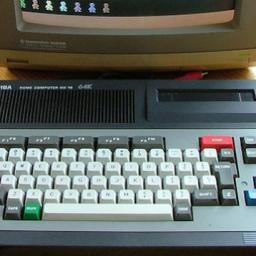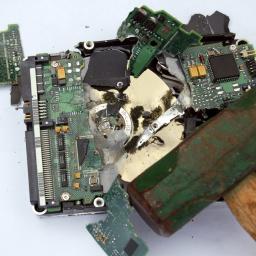
IBM, 1950s inventor of modern hard drives, is said to be working on a
new technology to replace their creation.
Saving files to memory is something that's supposed to be mostly invisible for the end user. We don't need to think about it; it just has to work. But whether it's a solid-state or hard disk drive, conventional storage solutions have their limitations -- namely, speed, rewritability and durability. A team at IBM Research's Almaden facility in California has a cure for all of that and it's called "racetrack memory."
The new technology is said to be far faster than solid state, and far more durable.
A new generation of routers have emerged that promise unparalleled gigabit wireless speeds using new 802.11ac Wi-Fi technology. The problem is that our mobile devices - even the ones that boast 802.11ac radios - often can't take full advantage of them.
Broadcom aims to change that with a new wireless chipset that will boost theoretical connection speeds from a smartphone or tablet to the Wi-Fi router to 650 Mbps. That may not be gigabit speed, but gigabit speed was always a bit of misnomer anyway - it's more an indication of overall network capacity rather than how quickly any given device could connect to the network.

From the department of questionable business decisions
comes Intel's MICA:The MICA, which was engineered by Intel, will be sold at luxury retailer Barneys New York and priced under $1,000, in line with similar jewelry from Opening Ceremony, Intel said. The device will provide alerts and notifications, including SMS messages, calendar reminders, meeting alerts and other notifications sent directly to the wrist display. Also, two-way wireless data communication through a 3G cellular radio will be available without the need to pair with a smartphone. The device can charge wirelessly or using a USB cable. Intel in October plans to provide more details on the bracelet's capabilities.
[Author note: If a chip manufacturer makes jewelry in the market and there are no nerds around to hear, do they make a sound?]
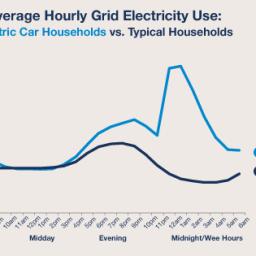 By day:
By day: electric vehicles are taking the world by storm: their sales are doubling every year, their fuel efficiency is off the charts, and some of them can even accelerate from 0-60 mph about as fast as you can say Elon Musk.
By night: the electric vehicle (EV) community continues to make waves. While you are in bed dreaming about how some day you too might own an electric car, many EV owners are doing something dramatic; something unusual; something that is reshaping the energy landscape.
They are using gobs of electricity.Read on for some great statistics and graphs. Check out the consumption spike that occurs after dinner.

Techcrunch is onto a mystery that should be no surprise to anyone who uses these things on a daily basis:
tablet sales are waning, while sales of computers are actually rebounding. Author and former CIO Peter Yared has the solution:
Businesses Need Super Tablets.
As the former CIO at CBS Interactive, I would have bought such super tablets in droves for our employees, the vast majority of whom primarily use only a web browser and Microsoft Office. There will of course always be power users such as developers and video editors that require a full-fledged PC. A souped-up tablet would indeed garner corporate sales, as Tim Cook would like for the iPad " but only at the expense of MacBooks.
The cost of managing PCs in an enterprise are enormous, with Gartner estimating that the total cost of ownership for a notebook computer can be as high as $9,000. PCs are expensive, prone to failure, easy to break and magnets for viruses and malware. After just a bit of use, many PCs are susceptible to constant freezes and crashes.
What say the Pipedot faithful: Is this just a twist in the business cycle? Would a super-tablet convince you to dust off the credit card? Or is TechCrunch just grasping at straws?
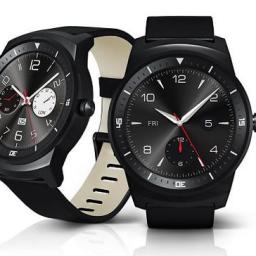
We're getting there, slowly. There's a new range of smartwatch in town, and they're getting better and more attractive. In the words of the Motley Fool financial blog,
Samsung and LG have upped the ante on smartwatches.
Here's Samsung's new Gear S:
Their latest watch is the Samsung Gear S, and it's one of the only smartwatches on the market that sports 3G connectivity. This allows it to function on its own without having to be forever tethered to a smartphone to access notifications and other content.
The other unique feature of the Gear S is its 2" curved OLED display with a resolution of 320x480. Samsung believes that a convex display allows for a more ergonomic and comfortable smartwatch. With its curved rectangular display the form factor of the Gear S is like a cross between fitness bands and smartwatches.
LG has released a new one too, and it's round and surprisingly traditional looking.
The G Watch R's circular touchscreen measures 1.3 inches versus the G Watch's rectangular 1.65-inch screen. The G Watch R's display has a higher resolution (320 i- 320 pixels) compared with the G Watch's (280 i- 280 pixels). That means images viewed on the G Watch R should look much sharper than those viewed on the standard G Watch. The G Watch R also uses plastic OLED display technology rather than the LCD technology used with the G Watch. As a result, LG says, the G Watch R will be easier to read in direct sunlight.
With so many models and so many new features, and yet so many missing features, the tech press is already jaded. Check out TechRadar,
who asks, "Does anybody even care anymore?" while simultaneously admitting, err,
they do.
[Ed. note: I'm definitely in the market, and they're getting closer to making me reach for my wallet!]
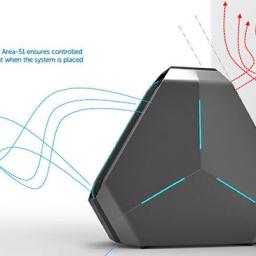
Dell's just come out with an
innovatively-designed new gamer machine in their Alienware series: it's vaguely hexagon-shaped, preventing you from placing it against a wall and decreasing its ventilation. Looks cool.
You'll notice the angled corners and somewhat of a triangular shape (with twice as many sides). According to Dell, you can place the Alienware Area 51 against the wall and not have to worry about thermals getting out of the control. That's because there's a controlled gap and a sharp angle that ensures only a small part of the system actually rests against the wall, whereas there's still plenty of room for hot air to escape up and away.
This design also offers users easy access to rear ports, though if you need more room, you can rotate the chassis like a ball so that the rear is facing upward instead of an at angle. Another advantage to all those angles is it makes the occasional transportation chore easier -- there are more places to grab hold of compared to a traditional desktop.
Slashdot
linked to it and got tons of flak about it being a Slashvertisement, but I think it's cool hardware. Have a look: what do you think?
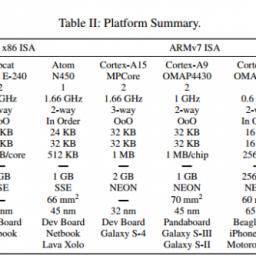
It's been a long-brewing argument, and for ages everyone has claimed that ARM chips are more power efficient due to fundamental differences in the architecture of its instruction set.
A new research paper examines these claims using a variety of ARM cores as well as a Loongson MIPS microprocessor, Intel's Atom and Sandy Bridge microarchitectures, and AMD's Bobcat.
This paper is an updated version of one I've referenced in previous stories, but its methods and claims are worth investigating in more detail. ISA investigations are intrinsically difficult given that it's effectively impossible to separate the theoretical efficiency of an architecture from the proficiency of its design team or the technical expertise of its manufacturer. Even products that seem identical can have important differences.
Extremetech looks into it via a series of benchmarks and concludes "
The RISC vs. CISC argument should've passed into history a long time ago. It may still have some relevance in the microcontroller realm, but has nothing useful to contribute to the modern era. An x86 chip can be more power efficient than an ARM processor, or vice versa, but it'll be the result of other factors - not whether it's x86 or ARM."
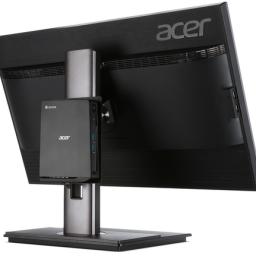
You may not be a big fan of ChromeOS but there's no denying that Chromeboxes on low-spec hardware make it easy to easy to get on line and access web services. And
Acer's hoping that's a market with room to grow.Acer's Chromebox CXI, announced on Thursday (and pictured mounted on a separate Acer monitor above), puts the Chrome OS into a small enclosure measuring 0.6 liters in volume. It runs an Intel Celeron 2957U dual-core 1.4GHz processor, has a 16GB solid-state drive, and promises a boot-up time of just 8 seconds.
The device can include up to 4GB in RAM, has four USB 3.0 ports, an SD card reader, LAN port for wired network connection, and HDMI and DisplayPort outputs. It's priced from $179.99, including a keyboard and mouse.
Also covered by Engadget.
[Ed. note: I think I want one of these babies, but I'm hoping they'll allow newer versions of ChromeOS to access network shares first, since that's where I've put all my stuff.]
 IBM, 1950s inventor of modern hard drives, is said to be working on a new technology to replace their creation.
IBM, 1950s inventor of modern hard drives, is said to be working on a new technology to replace their creation.





